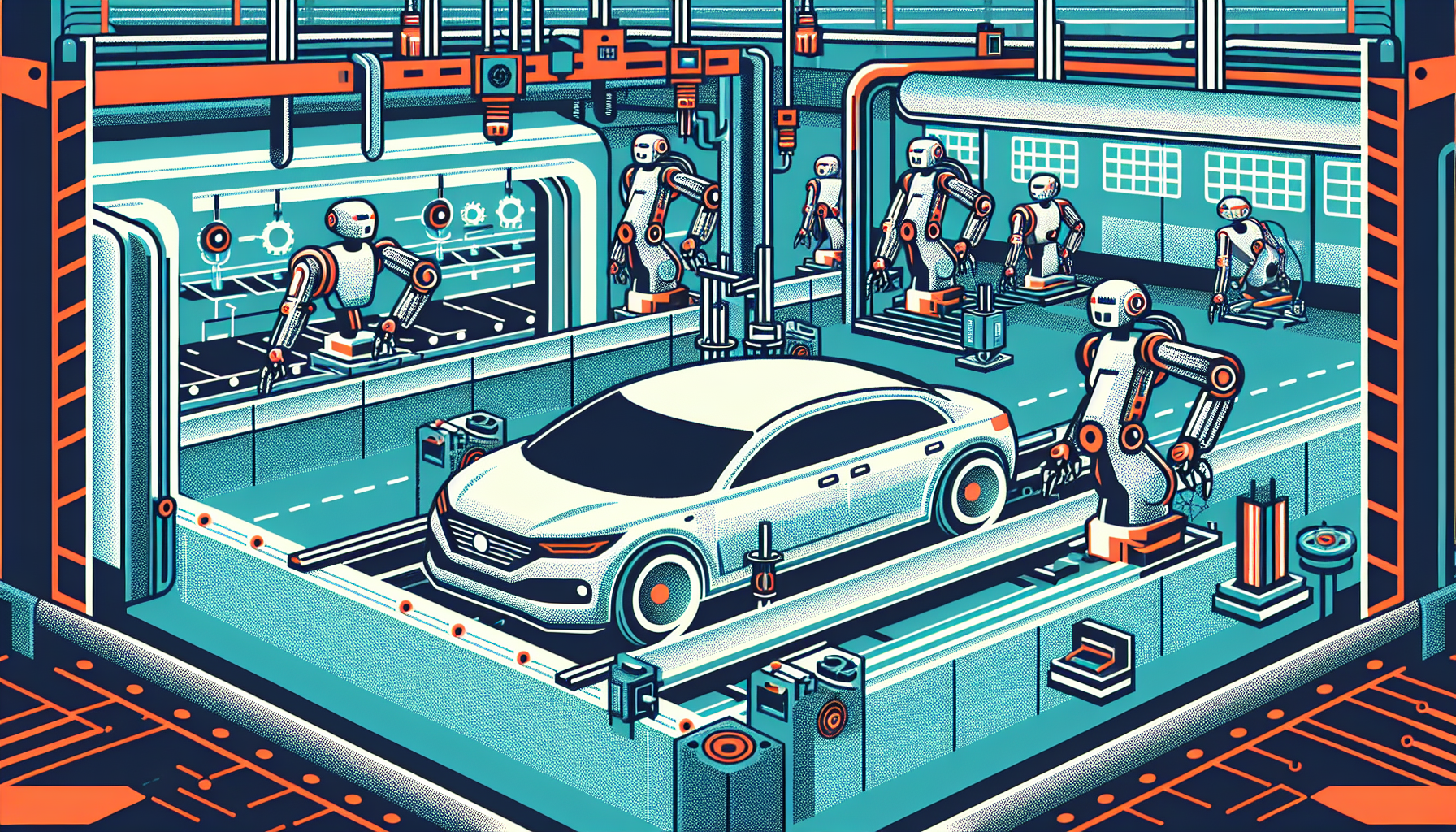The fusion of artificial intelligence (AI) and industrial robots is reshaping the automotive manufacturing industry, making operations more efficient, precise, and autonomous. Automakers around the globe are adopting this technology to refine car production, heralding a new era of intelligent and flexible manufacturing.
### Enhanced Capabilities Through AI Integration
Traditional industrial robots excelled at repetitive tasks but lacked the ability to adapt or make autonomous decisions. The integration of AI brings groundbreaking improvements:
AI-driven robots learn from real-time data and feedback, continually enhancing their performance. They can spot and fix errors, fine-tune processes, and achieve higher efficiency. In automotive production, this means robots can perfect their assembly skills, identify issues early, and adjust production variables for consistent, high-quality output.
AI enables robots to interpret and understand their surroundings, navigating complex environments with increased precision and safety. For instance, in auto component manufacturing, AI-powered robots can handle diverse components accurately, ensuring precise assembly and quality.
Combining AI and robotics allows for the automation of tasks that require human-like cognitive functions—recognizing objects, planning, and decision-making. This leads to higher automation and improved efficiency. In the automotive industry, robots can now perform intricate assembly tasks, conduct thorough quality inspections, and even collaborate with human workers, boosting overall productivity.
### Applications in Automotive Manufacturing
AI-powered robots are transforming various aspects of automotive manufacturing:
Robots with AI can execute complex assembly tasks with extreme precision. They align parts, assemble components, and verify connections, minimizing the need for human intervention and enhancing the quality of the final product.
AI helps robots detect defects and inconsistencies in auto parts with high accuracy. This automated inspection process reduces reliance on manual checks, improves quality control, and ensures only top-quality components make it to the final vehicle.
AI-equipped robots can work alongside humans, performing tasks that blend human skills and robotic precision. This synergy increases efficiency, letting human workers focus on more complex tasks while robots handle repetitive or precision-based work.
### Key AI Technologies Driving the Revolution
Several AI technologies are crucial to this transformation:
With machine learning, robots analyze large datasets to identify patterns, make predictions, and adapt over time. In automotive manufacturing, this means robots can continually optimize operations, detect anomalies, and enhance efficiency.
Computer vision allows robots to understand visual input from their environment. This technology enables robots to perceive objects, recognize shapes, sizes, and orientations, and perform tasks like quality inspection and precise positioning with high accuracy.
Deep learning involves training neural networks to recognize patterns and make decisions without explicit programming. In the automotive sector, this empowers robots to make complex decisions based on input data, enabling autonomous actions like anomaly detection and production optimization.
### Future Prospects and Trends
AI-integrated industrial robots are not just transforming current manufacturing but also paving the way for future advancements:
AI is pushing robotic autonomy to new heights, allowing robots to navigate dynamic environments, map complex spaces, and perform tasks with unparalleled speed and accuracy. This is crucial in industries like manufacturing, logistics, and labs, where robots can take over routine tasks, freeing humans for more meaningful work.
AI-powered robotics is poised to revolutionize sectors beyond manufacturing, including healthcare, retail, and construction. In construction, for instance, AI robots can tackle labor shortages, improve safety, boost productivity, and support sustainable practices.
Advances in AI are making robots easier to program through natural language processing and lead-through programming. This helps bridge the automation skills gap, making robots more user-friendly and opening new job opportunities while addressing labor and skills shortages.
### Conclusion
Integrating AI with industrial robots is revolutionizing the automotive manufacturing sector by boosting precision, speed, and autonomy. As AI continues to advance, even more sophisticated and efficient manufacturing processes will emerge. Automakers worldwide are adopting this technology to stay competitive, improve quality, and cut costs. The future of automotive manufacturing is set to become smarter, more adaptable, and more efficient, thanks to the empowering role of AI in robotics.

Leave a Reply